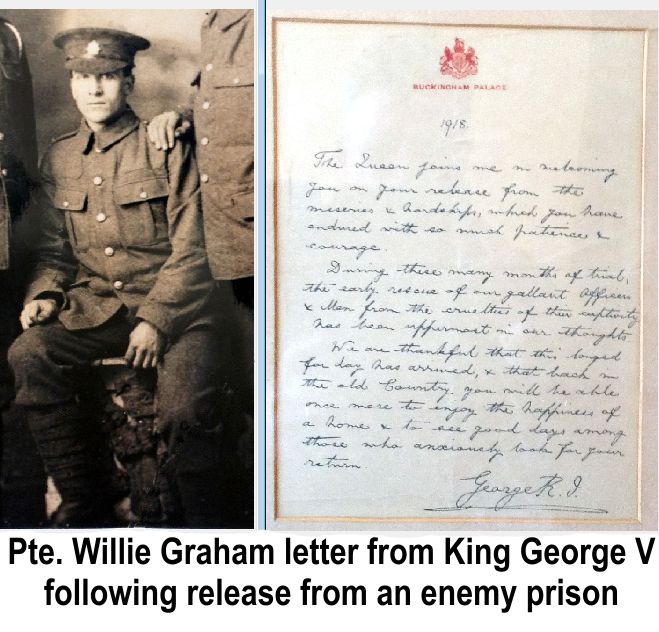On the 26th of May 1909 plain 19 year old John Cassidy, signed up to become Able Seaman John Cassidy, fatefully signing on for a 12 year contract with the Royal Navy. This was to see him up to the 25th of May 1921. John whose father was also named John, came from a Kilkeel Co Down family, heavily involved in the towns fishing industry and so his career choice seems a natural progression.
Little did he know as he took the Kings shilling, just how significant those dates were to prove, in not just his life, but that of his entire generation. Within 5 years the world would be plunged, into the bloodiest of turmoil, unleashed by the beginning of the 1st world war. It’s commencement found John aboard HMS Hibernia, affectionately known by those who served aboard her as the “wobbly eight”, a reference to King George, after which the ships class was designated, and aboard which John had been serving on since 1912.
Just 4 months prior to hostilities commencing, he was reassigned to his new ship called the Pembroke, which was to become a mainstay in his naval career. Johns 1st ship HMS Hibernia, was famous in her own right, as shortly after John had joined her crew in 1912, she began experiments in naval aviation, having been fitted with a flight deck for aircraft to land and take off from. She was therefore this countries very 1st aircraft carrier.
Johns 2nd ship started her naval career as HMS Trent, but was renamed in 1915 as HMS Pembroke and served off the coast of as it was then Tanganyika or Tanzania as it is called today. She was a robustly built gunboat, of all steel construction and dubbed as being “the most grotesque craft ever seen” but Pembroke carried quite a punch being armed with variously 3 x 6.3-inch (160-mm) 64-pounder guns or later on 3 x 4.7-inch rapid-firing guns.
Again in 1915 he was transferred to a very different posting aboard HMS Cornwallis, a dreadnaught class ship, which served in the fateful Dardanelles Campaign, bombarding Ottoman Turkish forts and providing support for Allied forces landing on the Gallipoli Peninsula. A short period of service in the Indian Ocean, followed but mostly she remained in the Mediterranean and it was here that she was lost to a torpedo from a German submarine U32 on 9th of January 1917.
She remained afloat long enough for most of her crew including John, to abandon ship, although sadly 15 sailors from her complement of 720 were killed as a result of the torpedo attack

HMS PEMBROKE
Afterwards John was once again reunited with his previous ship the Pembroke, where he remained until July 1917 when he was again reassigned to a new boat HMS Undaunted, which had just become leader of the 10th Destroyer Flotilla of the Harwich Force. He was later reassigned aboard the brand new HMS Coventry, which had just been launched shortly before he joined the ship.
In March 1918 he transferred for a short time to HMS Blonde to lay mines but by that stage of the war the ship never actually laid any. Once more the Pembroke beckoned and proved to be the ship upon which John saw out his war, although his naval service didn’t end there, as he went on to complete his original contract.
John was not the first Cassidy brother to have survived being sunk by a German U boat. One of his brothers, Robert Cassidy, was on the 30th of May 1918 fishing aboard one of their uncle Charley’s fishing boats, when eight of the vessels were forcibly boarded at gunpoint, by kriegsmarine crew, from submarine U 65, commanded by Admiral Otto von Schrader. The Germans ordered the crews into their punts and proceeded to place explosives into the holds of each vessel in turn, including, Cyprus, Honey Bee (the only motorised boat as the rest relied on sails), Jane Gordon, Lloyd, Marianne McCrum, Never Can Tell, Sparkling Wave and St. Mary. One boat the Moss Rose. was spared by the Germans, as several of the trawlers didn’t carry life boats, so she could transport their crews including Robert, ashore. He was also a member of Aughnahoory LOL no 343B.










